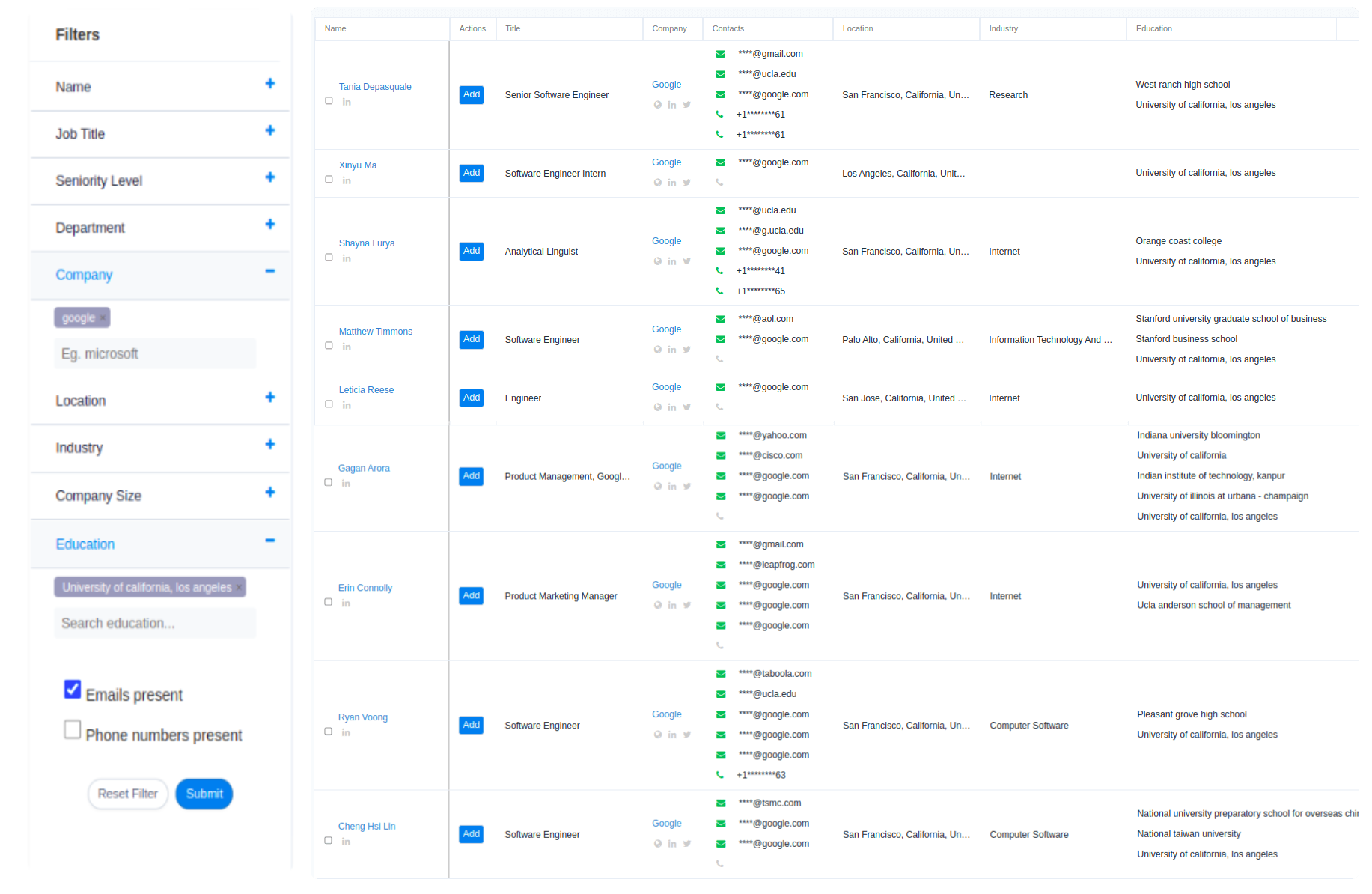What is Lead Enrichment?
Lead enrichment is the process of collecting, establishing and verifying the data for lead generation. The basic thought process behind lead enrichment is to increase data quality. Data quality is the refining, filling and updating of data using several techniques. To increase the effectiveness of sales strategies as well as lead generation, it is essential to first correct and keeps the data correct. Lead enrichment encompasses several practices and techniques to clean data. There are different uses for different teams in a company.
What kind of data is useful?
Sales practices are successful as long as there are proper connections with the relations in the market. It only gets easier and better when there’s data easily available. Lead enrichment practices focus on collecting data around a suitable lead and highlight the way to the decision-makers. Lead enrichment can be primal in leading the way to getting relevant leads for businesses. Say, for example, a company has a lot of leads because they are in a certain domain. But not all of their leads can be beneficial or the ones they want to target. Through the process, they can work on only those leads which are more dependent on their business. You can also target leads based on specific data possible only through lead enrichment. That is what lead generation can do – highlighting leads or lead enrichment for better results.
Where does the data come from?
You can source data based on three factors
• Accessibility: Is the data readily available to be associated with a specific lead?
• Reliability: Reliability incorporates the general data quality of the data acquired
• Ease of transfer: Is the data easily transferrable to be used for any specific purpose?
Even though data can be sourced from online services on a large scale by integrating business systems. Online business platforms like LinkedIn are the trustable resource for data about their clients. Platforms and sources like this do tend to have reliability but, with limits. For supporting client data, B2B sellers usually prefer platforms like LinkedIn. But B2C sellers, prefer social media platforms like Facebook and Twitter.
With the importance of Big Data and Data Mining Service in today’s age, useful data still sources from business operations. Lead enrichment doesn’t have a lot to do with big data. Lead enrichment is about targeting the data that the business is bound to use or is working in. Highly specific data is targeted and used with every transaction and a very particular reason.
Therefore, sales can be beneficial only when there is a substantial amount of automation to specific elements. Hence, the key to automation is integrating systems for lead enrichment from multiple sources. Automation of such systems and CRM tools can, therefore, enable reaching out to certain leads.
Lead enrichment can also be a manual task with the different teams carrying out their research in specific areas. But, this works only if the specific targets are very small. Otherwise, it is usually good for any business to automate such tasks for large scale.
Benefits of Lead Enrichment:
Lead enrichment is primarily for increasing efficiency of the various sales tasks. Using lead enrichment in companies to map the decision-makers is also a great utility. If it is not possible to map out the decision-makers, the next logical step is to target the influential people in the business.
A not-so-hidden benefit is a lead generation by sourcing data from somewhere other than customers. If it is possible to source data from other vendors instead of customers, it reduces the conversion journey. With fewer data requested from customers, it results in a higher rate of submissions, and an even higher rate of leads generated. This results in a much higher rate of submissions and therefore leads generated also goes up. There can be two subdivisions of lead enrichment as mentioned below:
• Sourcing and updating lead from large data platforms like social media.
• Linking updated to internal data with other sources to communicating with the leads.
The most useful cases to support lead enrichment:
1. Businesses can benefit a lot from the following possibilities that support lead enrichment:
2. Integrating internal data sources with the data that is already existing to other sources inside the company,
3. Integration of external sources to automate adding the data to contacts available.
4. Encouraging the staff to update and make changes to data as a step while completing other tasks.
5. Automation of the assignment of data checking and cleansing to the employees.
6. Automation of data cleaning tasks and to validate and cleaning at the earliest.
7. Using tools to boost cooperation between teams.
8. Getting your sales tasks efficiency higher is a crucial step in business development.
Lead Enrichment is about integration and automation:
It also depends on the way you carry out your integration and automation tasks. As it is a crucial task to target specific leads for business decisions, accuracy is a crucial matter. Additionally, it applies to the automation efforts as well because there are a lot of tasks to be done. There are three questions one can ask themselves:
- Would we be able to integrate any systems that impact the data stored about the contacts?
- Will it be possible to change employee data later for direct data updating?
- Will the teams be able to impact data flow anytime? And is it possible to do so without coding?
The most important factor: Can all these three tasks be done without any special software task or project?
More importantly, it is important that one can be confident about the organization’s abilities. That is, to successfully carry out the tasks for lead enrichment and content optimization. By following the three tasks it is easy to minimize the necessity for making changes in development projects.
it is a great option for salespeople who wants to use data-informed decisions. By knowing more from an existing lead, a sales team may even be able to discover more leads. It also helps in designing a road map for the further sales process.




